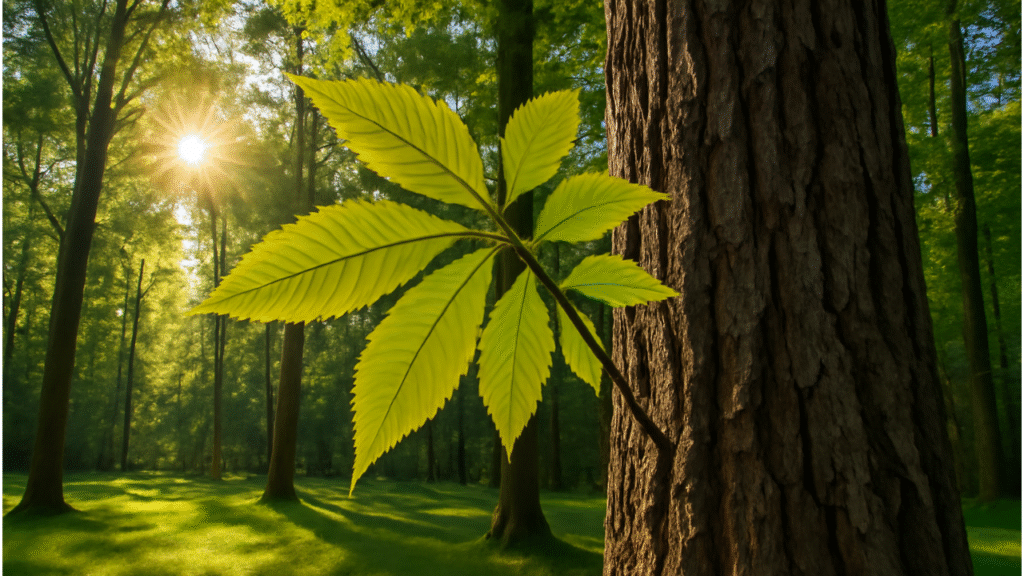
How to Identify and Care for Hickory Trees in Michigan: A Complete Guide for Homeowners and Gardeners
Have you ever wandered through Michigan’s woodlands or your own backyard and wondered how to identify those towering trees with unique bark and distinctive leaves? If you’ve spotted a hickory tree and felt unsure whether it’s truly a hickory, you’re not alone! 🌱 Understanding hickory trees in Michigan can be tricky, but with the right guidance, you’ll soon be able to spot them with confidence and care for them like an expert.
In this complete guide, we’ll walk you through everything you need to know—from identifying hickory trees to providing the best care for them in Michigan’s climate.
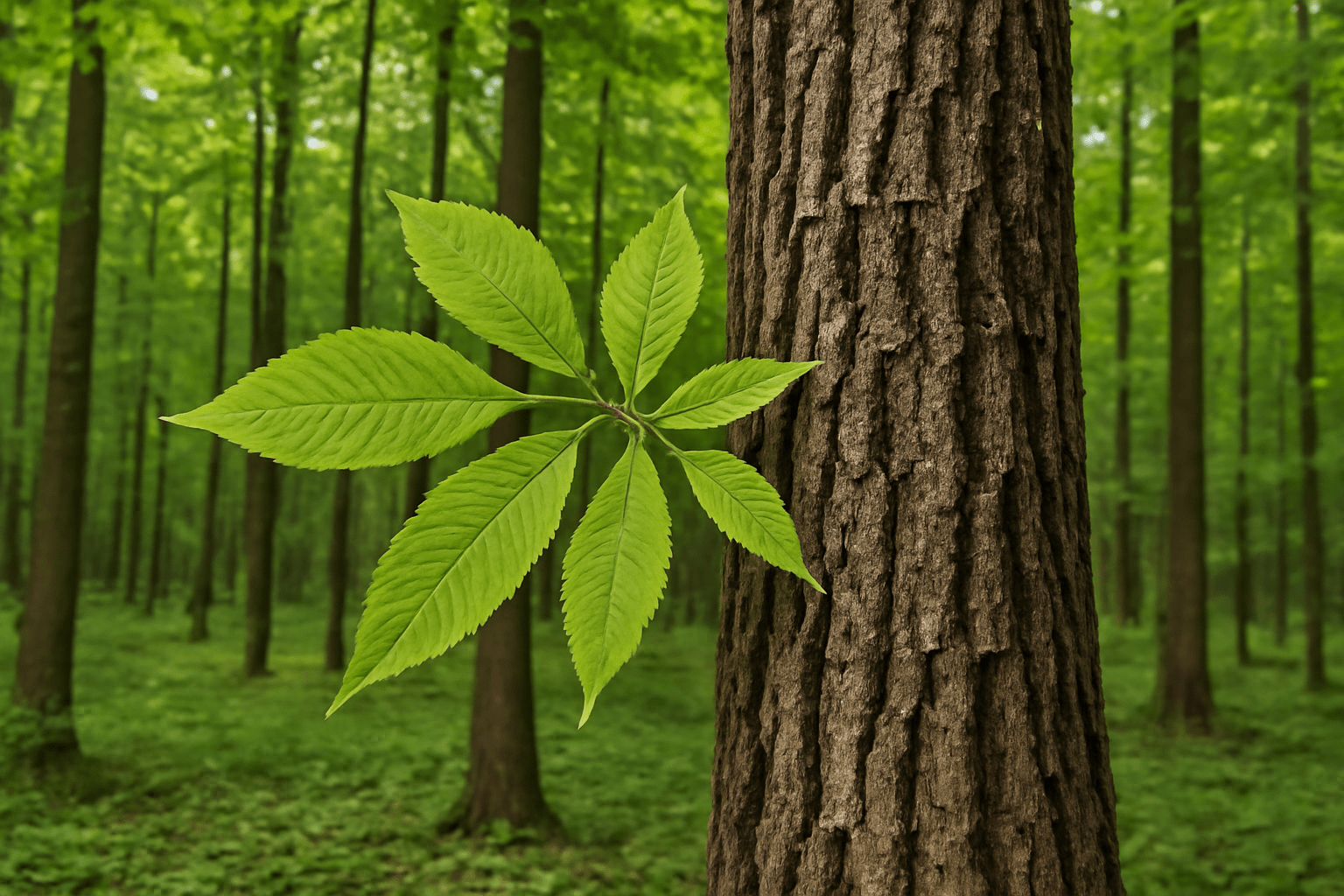
Whether you’re a homeowner looking to add trees to your property or a gardener wanting to ensure your hickory trees thrive, this guide will equip you with practical, actionable tips. Keep reading to uncover the secrets of these magnificent trees and how you can make them flourish in your own yard. 🌳
Table of Contents
Toggle🌳 Identifying Hickory Trees in Michigan 🌳
Identifying hickory trees in Michigan is easier than you might think! By paying attention to a few key features, you can quickly spot a hickory tree even if you’re a beginner 🌿. In this section, we’ll cover everything you need to know to make sure you can confidently identify hickory trees, whether you’re walking through the forest 🌲 or looking at trees in your backyard 🌳. Let’s dive in!
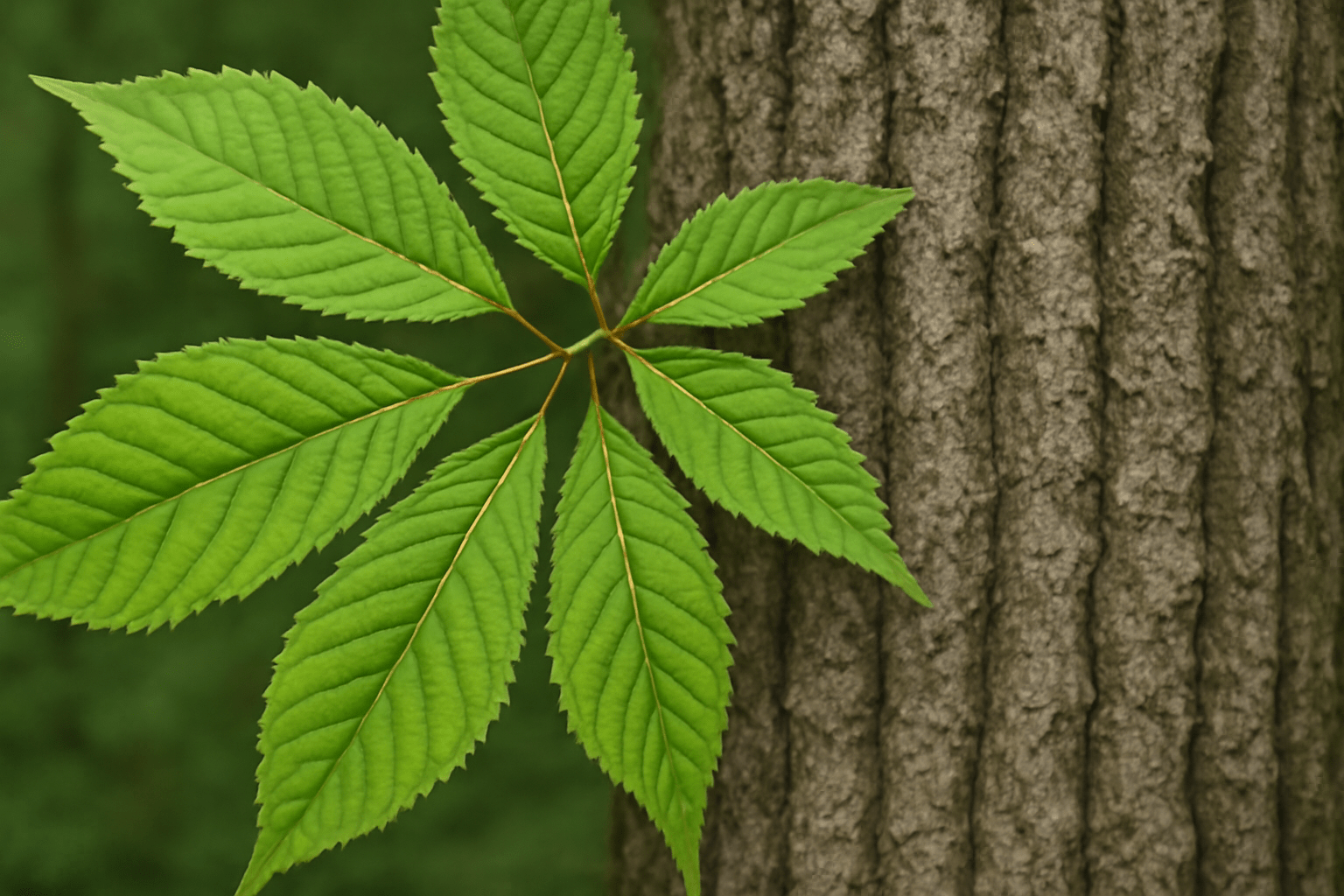
🍂 Key Features of Hickory Trees 🍂
Hickory trees have several unique characteristics that make them easy to identify. Here’s what to look out for:
🍃 Leaves 🍃
Hickory leaves are long, narrow, and have serrated edges—kind of like jagged teeth! 😁 They’re typically 6 to 10 inches long and have 5 to 7 leaflets per leaf 🌿. If you see a leaf with finely toothed edges and a long, lance-like shape, you’re likely looking at a hickory tree 🌳.
🌲 Bark 🌲
Hickory bark is one of the most distinctive features 🌳. It’s generally grayish to light brown and has deep, vertical furrows and ridges, which give the tree a rugged, textured look 🌲. This rough bark helps protect the tree from harsh weather conditions in Michigan 🌨️.
🌿 Twigs and Buds 🌿
When you look at the twigs 🌱, they tend to be slender and reddish-brown 🌳, often with a slightly zigzag shape. The buds are large, pointed, and usually appear in pairs, making them stand out from other trees 🌿.
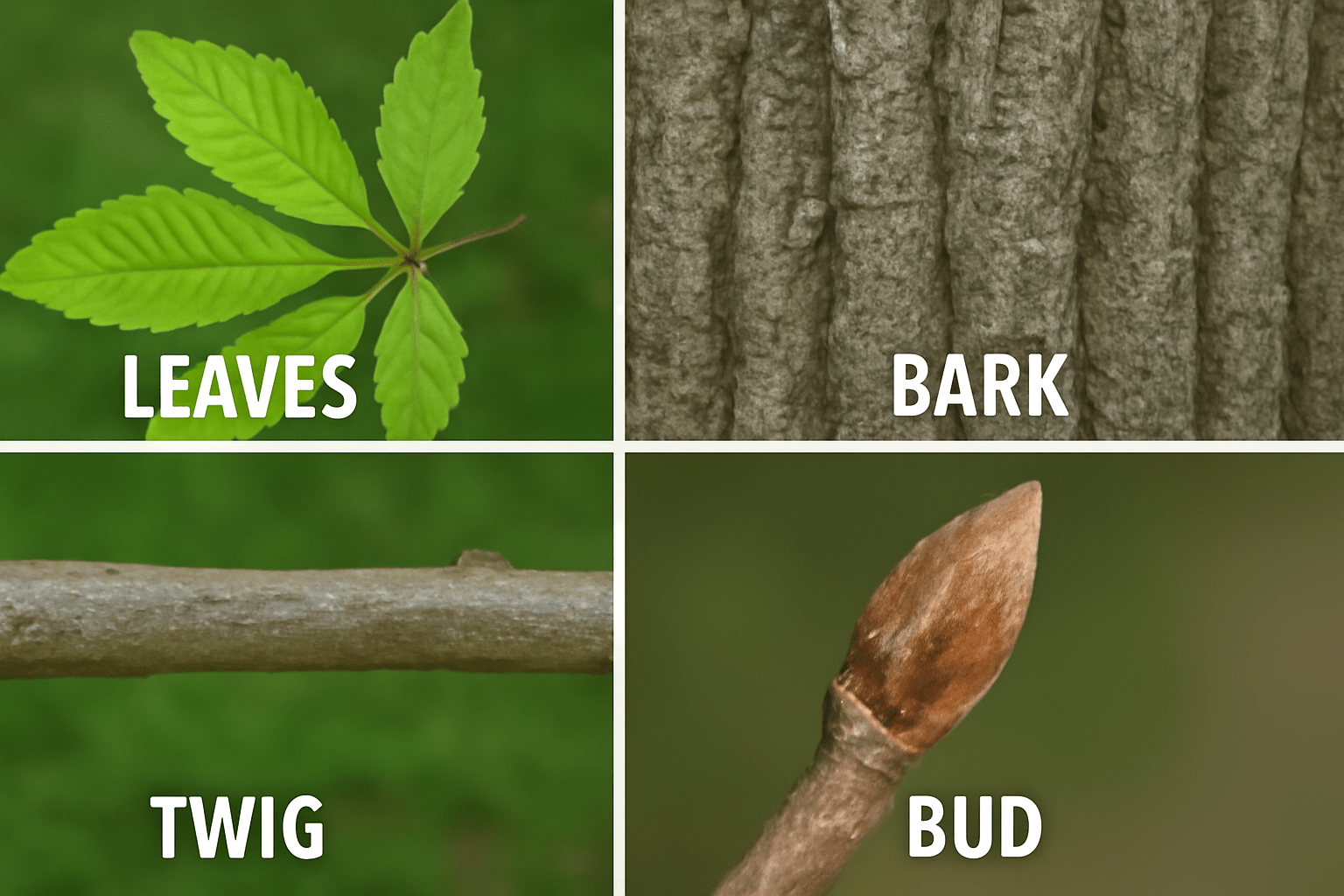
🌸 Flowers and Seeds 🌸
In spring 🌸, hickory trees produce long, drooping catkins (male flowers) 🌼, while the female flowers are small and grouped together 💐. As the season progresses 🌞, these flowers mature into hard, round nuts 🍃, which are typically encased in a green husk 🟢. These nuts are another clear sign you have a hickory tree 🌳.
🍃 Different Hickory Tree Species in Michigan 🍃
Michigan is home to several hickory species 🌳, each with its own unique traits. Here are the most common ones you might encounter:
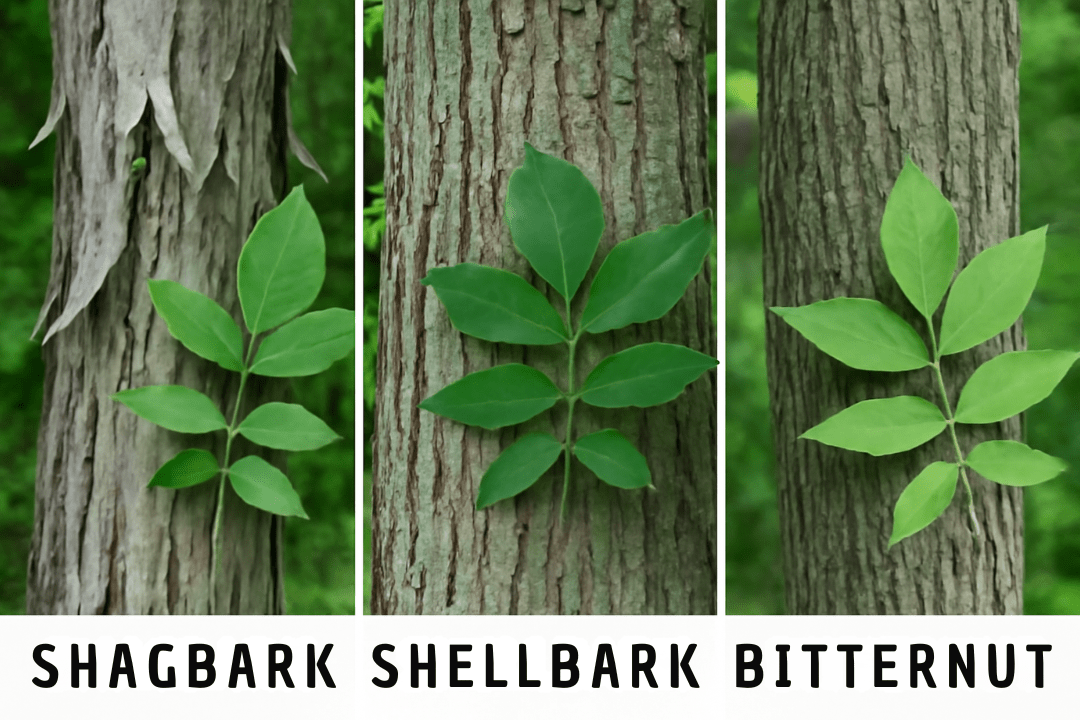
🌳 Shagbark Hickory 🌳
Known for its unique bark that peels off in long strips 🪵, the Shagbark Hickory is one of the easiest to identify 🌳. This tree grows well in well-drained soils and is often found in mixed forests across Michigan 🍂.
🍂 Shellbark Hickory 🍂
This species is similar to the Shagbark but with smoother, less peeling bark 🌿. The nuts of the Shellbark Hickory are larger than those of other species and have a distinctive sweet taste 🍯.
🌰 Bitternut Hickory 🌰
This species is a bit more elusive 🧐 and is usually found in wetter areas 💧. The Bitternut Hickory has yellowish buds and leaves that set it apart from the others 🌿. Its nuts are bitter, hence the name! 😋
By knowing these key features and species, you’ll be able to easily identify hickory trees in Michigan 🌳 whether you’re out in the woods 🌲 or standing in your own yard 🏡. Keep these characteristics in mind, and with a little practice, you’ll become an expert at spotting these stunning trees! 🌿
🌿 Common Mistakes in Identifying Hickory Trees 🌿
While hickory trees in Michigan are relatively easy to identify once you know what to look for, many people often make a few common mistakes that can lead to confusion 🤔. In this section, we’ll highlight these mistakes and show you how to avoid them so you can correctly identify hickory trees every time 🌳. Let’s get started! 😊

🌳 Mistake 1: Confusing Hickory Trees with Other Species 🌳
It’s easy to mistake hickory trees for other trees that look similar 🌱. Some of the most common mix-ups include:
🌰 Walnut Trees 🌰
The leaves of walnut trees may look somewhat similar to hickory trees 🍃, especially from a distance 👀. However, walnut leaves are usually more rounded and have a smoother edge compared to the jagged, serrated edges of hickory leaves 🌿. Also, walnut trees have a distinct dark, smooth bark 🌳, whereas hickory bark is deeply ridged and textured 🌲.
🏞 Oak Trees 🏞
Oaks and hickories often share similar environments 🌳, but their leaves are quite different 🍃. Oak leaves tend to be lobed and rounder, while hickory leaves are more elongated with sharply serrated edges 🌿.
🌰 Pecan Trees 🌰
Pecan trees, a close relative of the hickory 🌳, can be confused due to similar leaf shapes 🌱. The key difference is the scent of the leaves—hickory leaves have a more aromatic smell when crushed 👃, while pecans have a more subtle scent 🍃.
Solution: Pay close attention to the leaf shape 🍂, bark texture 🌲, and the overall tree structure 🌳. Hickory trees have unique features that can help you differentiate them from others 🌿.
🍂 Mistake 2: Ignoring the Bark Texture 🍂
One of the most distinguishing characteristics of hickory trees is their bark 🌳. However, many people overlook the bark and focus too much on the leaves 🍃 or flowers 🌸. Hickory bark is deeply furrowed, with ridges that often look “shaggy,” especially in species like the Shagbark Hickory 🌿. This texture is not found in most other tree species in Michigan 🌲.
Solution: Look closely at the bark 🌳—if it’s rough, deeply furrowed, and peeling in strips 🌲, you’ve most likely found a hickory tree 🌳. Don’t confuse this with the smoother, plainer bark of trees like maples or elms 🌳.
🌱 Mistake 3: Not Noticing the Nuts 🌱
Hickory nuts are a telltale sign that you’re dealing with a hickory tree 🌳. However, many people make the mistake of not recognizing the nuts or confusing them with similar tree nuts 🌰, like walnuts or acorns 🌰. Hickory nuts have a hard, round shell and are enclosed in a green, spiky husk 🍃, which can be a bit tricky to spot if you’re unfamiliar 🌱.
Solution: Look for the distinctive green husk 🟢 and the hard shell of the nut 🌰. As they mature, these nuts will fall from the tree and provide a clear indication that you’re dealing with a hickory 🌳.
🍃 Mistake 4: Overlooking the Shape of the Tree 🍃
Another mistake people make is overlooking the shape and size of the tree 🌳 itself. Hickory trees tend to have a tall, straight trunk 🌲 and an oval or rounded crown 🌿. This is especially true for species like the Shagbark and Shellbark Hickory 🌳, which can grow quite large 🌲.
Solution: Pay attention to the overall shape of the tree 🌳. If you see a large, tall tree with a rounded crown 🌳 and rugged bark 🌲, it’s likely a hickory. This can help you quickly rule out other species 🌱 that may have more irregular shapes 🍂.
By being aware of these common mistakes 🚫, you’ll avoid confusion and become much more skilled at identifying hickory trees 🌳 in Michigan. Keep these tips in mind during your next walk 🚶♂️ in the woods 🌲, and you’ll find that spotting these stunning trees becomes second nature 🌿! 🌳
🌲 Caring for Hickory Trees in Michigan 🌲
Caring for hickory trees in Michigan doesn’t require a lot of effort, but it does require attention to detail 🌱. These hardy trees are relatively low-maintenance once established 🌳, but proper care ensures they thrive and grow healthy for years to come 🌿. In this section, we’ll cover the essential care tips to help you keep your hickory trees in top shape 🌳. Let’s dig into the best practices for watering 💧, soil 🌱, pruning ✂️, and pest control 🐞!
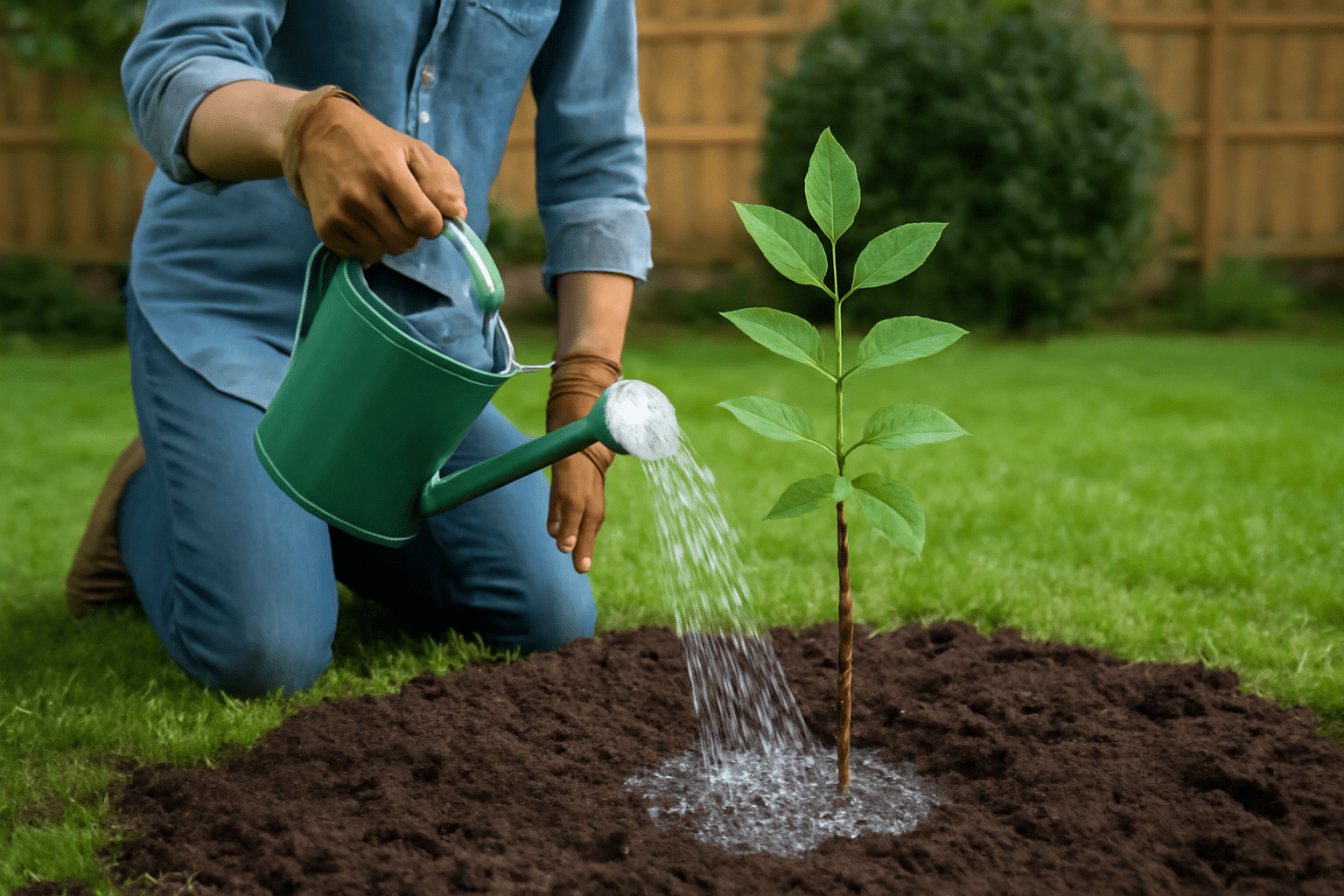
💧 Watering Your Hickory Tree 💧
Hickory trees are fairly drought-tolerant once established 🌳, but during their early years, they need consistent moisture to develop strong roots 🌱.
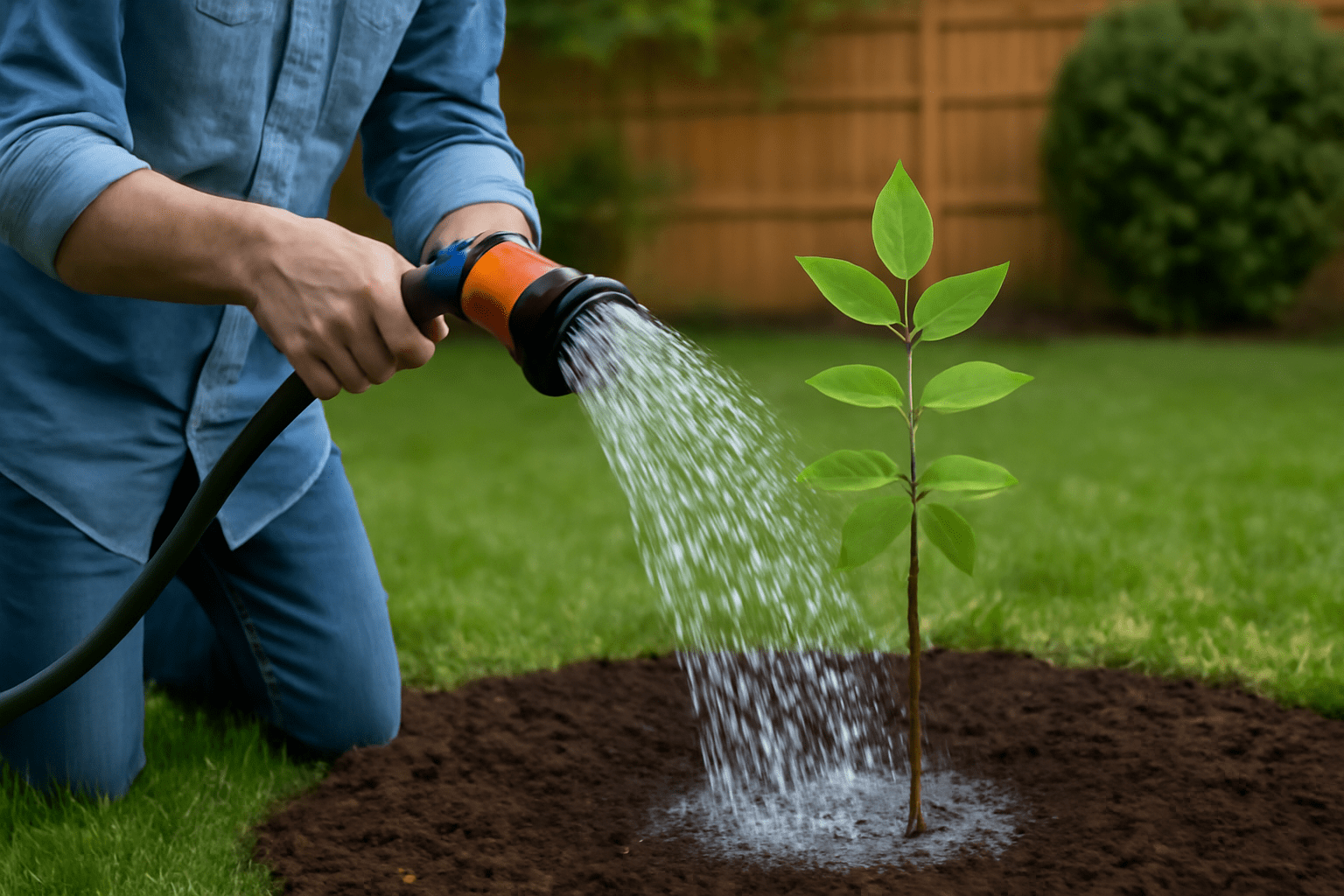
🪴 Newly Planted Trees 🪴
Ensure that the tree gets a deep watering every week during dry periods 🌞. Water deeply to encourage roots to grow downward rather than staying shallow 🌱.
🌳 Mature Trees 🌳
Once your hickory tree is established (usually after a few years), you can water it less frequently 💦. However, during extremely hot or dry spells 🌞, it’s still important to give the tree a deep soak to prevent stress 🌿.
Pro Tip: Avoid overwatering! 🌊 Hickory trees don’t like “wet feet” (waterlogged soil), so make sure the soil is well-drained to avoid root rot 🦠.
🌱 Soil and Fertilization 🌱
Hickory trees prefer well-drained, loamy soil that’s rich in organic matter 🌿. Michigan’s soil types can vary, but here’s how to help your hickory thrive:
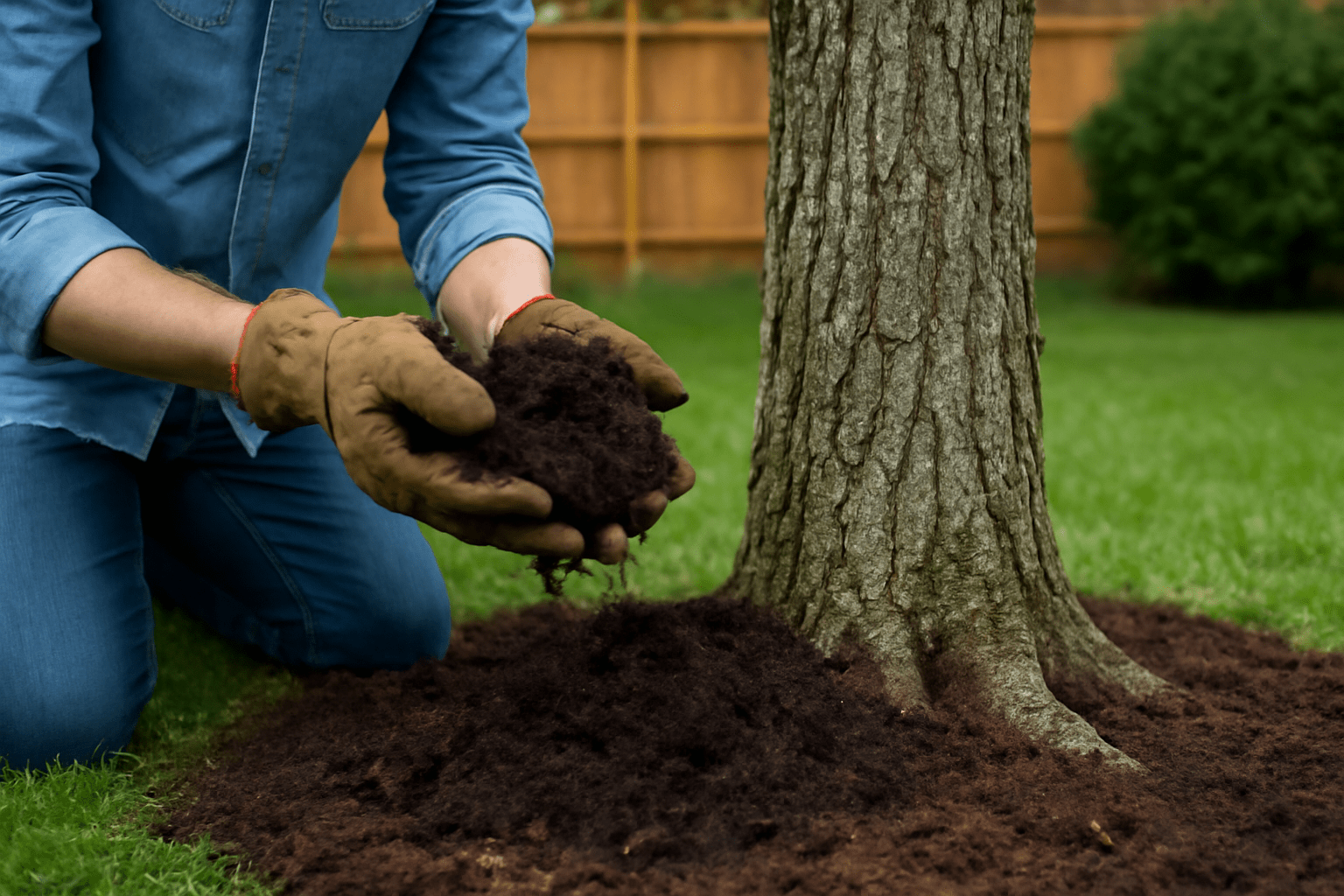
🌾 Soil Requirements 🌾
Ensure your hickory tree has good drainage—plant it in soil that allows water to pass through easily 💧. If you have heavy clay soil 🏞️, you can amend it with organic matter like compost to improve drainage 🌱.
🌿 Fertilizing 🌿
In general, hickory trees don’t need a lot of fertilizer 🌳. However, if the soil is poor, you can give your tree a boost in the spring 🌼 with a slow-release fertilizer 🌱. Focus on using organic fertilizers like compost or mulch, which can enrich the soil without harming the tree’s roots 🌿.
Pro Tip: Add a layer of mulch around the base of the tree 🍂. This will help retain moisture 🌿, suppress weeds 🌾, and keep the roots cool during hot summer months ☀️.
✂️ Pruning Hickory Trees ✂️
Pruning is an important part of maintaining a healthy hickory tree 🌳. Proper pruning helps improve air circulation 🌬️, remove dead or diseased branches 🌿, and maintain the tree’s shape 🌳.
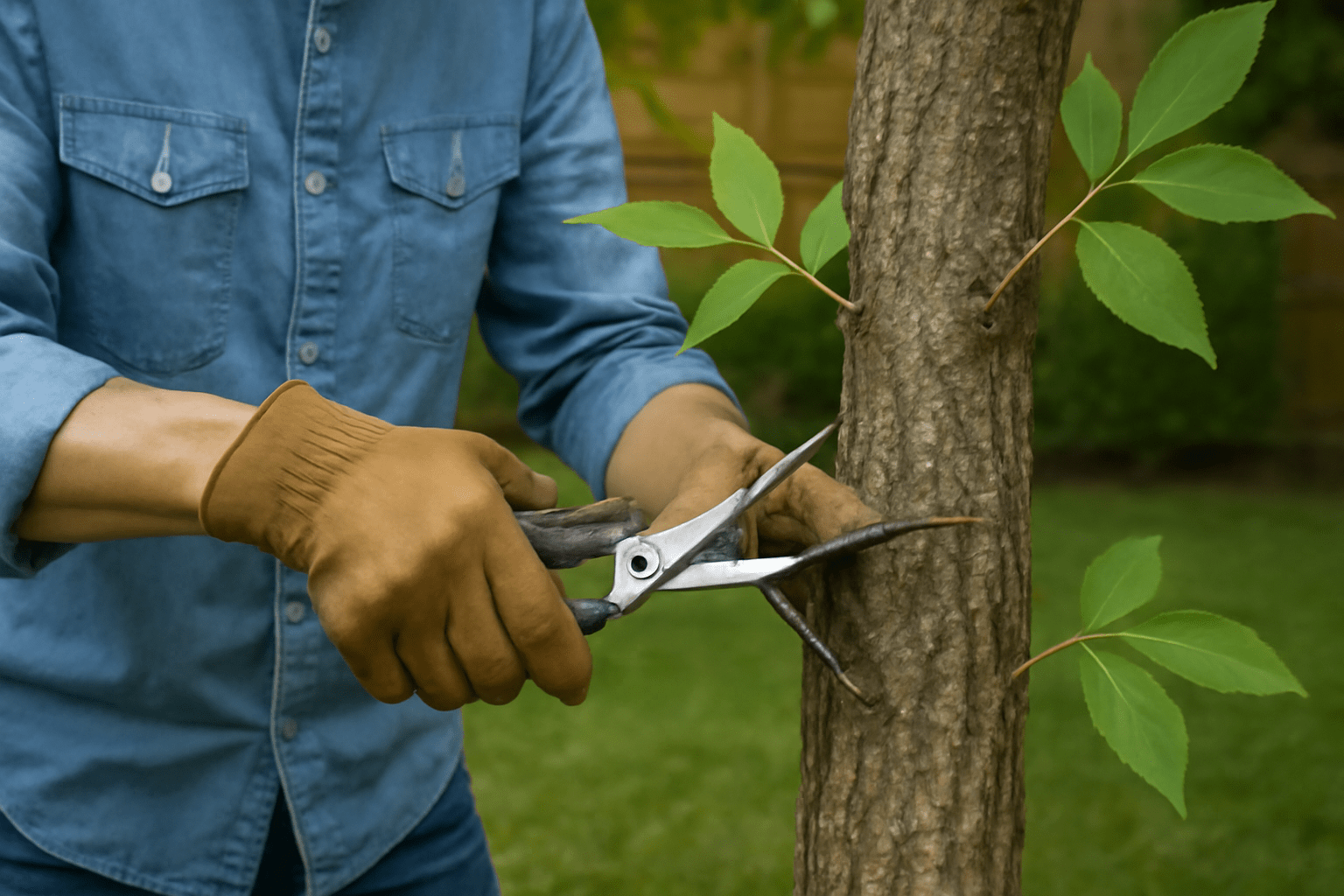
🗓 When to Prune 🗓
The best time to prune a hickory tree is in late winter or early spring 🌸, before the sap starts flowing and the leaves begin to bud 🌿. This minimizes the risk of bleeding sap, which can harm the tree 🌳.
✂️ How to Prune ✂️
Remove any dead, damaged, or diseased branches first 🪓. Be careful not to prune too much; a good rule of thumb is to never remove more than 25% of the tree’s canopy at a time 🌳.
Pro Tip: Always use sharp, clean pruning tools 🔪 to avoid damaging the tree 🌱. A clean cut will help the tree heal faster and prevent disease 🦠.
🐞 Preventing Pests and Diseases 🐞
Hickory trees are generally resistant to pests and diseases 🦠, but they can still fall victim to certain issues, especially in humid or wet conditions 🌧️. Here’s how to prevent problems:
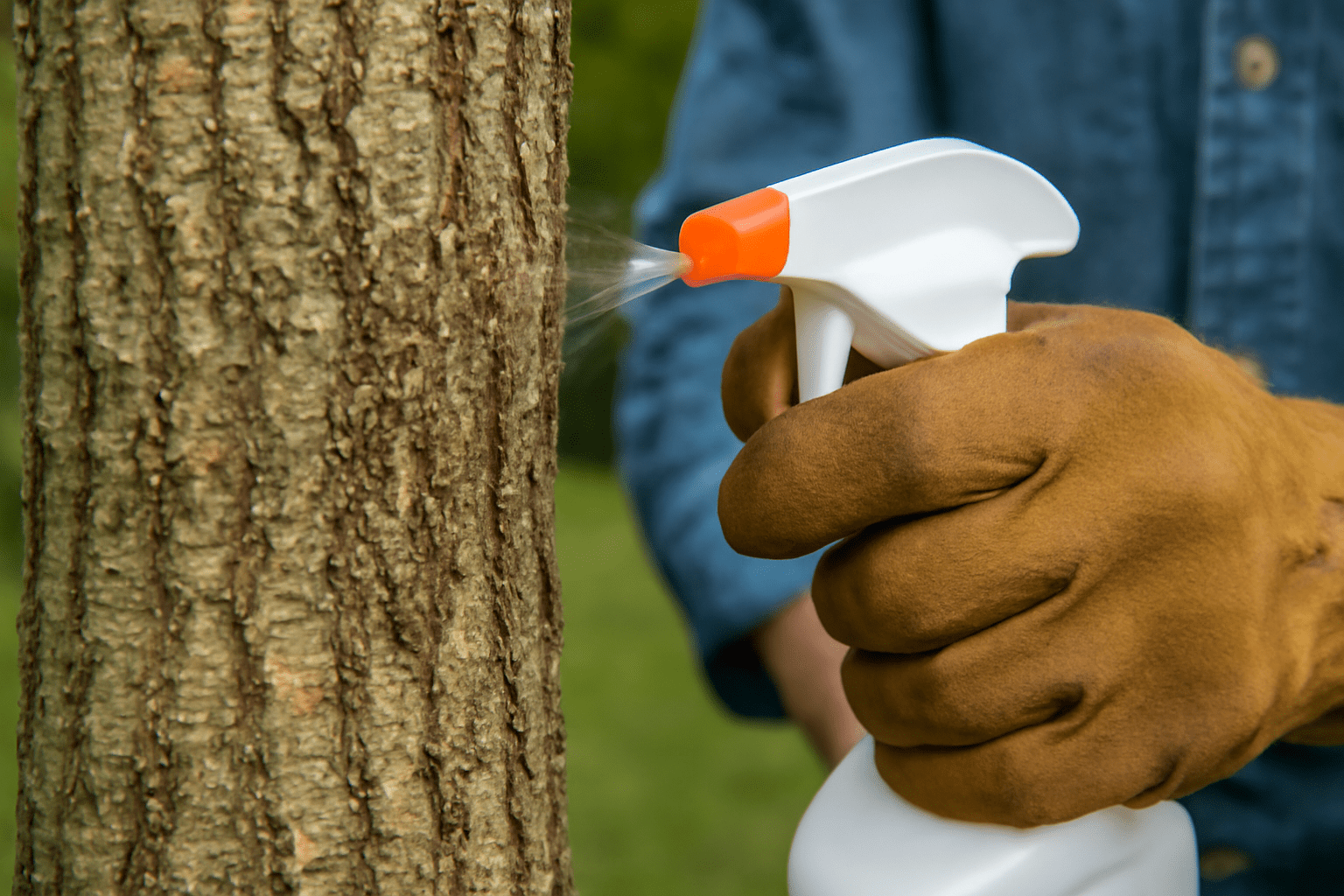
🪲 Common Pests 🪲
- Hickory Bark Beetles: These pests can damage the tree’s bark 🌳. You can manage this by removing any infected branches 🌿 and using insecticidal soap or neem oil if necessary 🌿.
- Aphids: These tiny insects 🐜 can weaken your hickory tree by sucking sap 🌱. Insecticidal soap can also help with aphid infestations 🐞.
🌿 Diseases 🌿
- Hickory Dieback: This is a fungal disease that causes the tree’s branches to die 🌿. Prune out infected areas ✂️ and improve airflow around the tree 🌬️ to prevent this disease.
- Canker Diseases: Look for sunken, discolored areas on the bark 🌳. Remove infected branches and avoid excessive pruning, as this can expose the tree to more disease 🦠.
Pro Tip: Regularly inspect your tree for signs of pests or disease 👀. Early detection is key to stopping problems before they spread 🐞.
🌞 Protecting Your Tree from Michigan’s Weather 🌞
Michigan’s weather can be extreme, especially in winter ❄️, with cold temperatures 🌬️, heavy snow ❄️, and strong winds 💨. To protect your hickory tree 🌳:

🧣 Winter Protection 🧣
Wrap the trunk of young hickory trees with burlap or tree guards 🛡️ to protect them from harsh winter winds 💨 and temperature fluctuations 🌡️.
❄️ Snow Loads ❄️
If your hickory tree is young 🌱, you may need to shake off heavy snow ❄️ from its branches during the winter to prevent breakage 🏔️. Once the tree matures 🌳, it will be better able to handle snow loads naturally 🌨️.
Pro Tip: Keep an eye on your tree during Michigan’s unpredictable spring 🌸 and fall 🍁 weather, as sudden frost 🌨️ or windstorms 🌬️ can cause damage to your tree 🌳.
Caring for hickory trees in Michigan is straightforward once you understand their needs 🌿. By following these simple tips for watering 💧, soil care 🌱, pruning ✂️, pest control 🐞, and weather protection 🌞, your hickory trees will thrive for years to come 🌳. Remember, hickory trees are hardy 🌿, low-maintenance plants 🌱 that can add beauty and value to your yard 🏡, and with the right care 🌳, they’ll grow tall and strong 🌳, becoming a lasting part of your landscape 🌲!
🌲 Planting and Transplanting Hickory Trees in Michigan 🌲
Planting and transplanting hickory trees in Michigan can be a rewarding process 🌱, but it’s important to get the timing and technique right to give your tree the best start 🌳. Whether you’re planting a new tree or relocating an established one 🌳, proper planting ensures your hickory tree will thrive in Michigan’s climate 🌿. In this section, we’ll guide you through the steps to successfully plant and transplant hickory trees 🌲, ensuring they grow strong and healthy 🌱.

🌿 Best Time to Plant a Hickory Tree 🌿
Timing is crucial when it comes to planting hickory trees ⏰. Here’s the best time for each:
🌸 Spring 🌸
The ideal time to plant hickory trees in Michigan 🌳 is in early spring (April-May), after the last frost ❄️ but before the weather gets too warm 🌞. This gives the tree time to establish its roots 🌱 before summer heat hits ☀️.
🍂 Fall 🍂
Alternatively, fall (September-November) 🍁 is another great time for planting 🌳. Cooler temperatures 🌬️ and more frequent rainfall 🌧️ help the tree settle in before the winter dormancy period ❄️.
Pro Tip: Avoid planting in summer 🌞 when the soil is dry 🌵 and the tree will face more stress. Spring 🌸 and fall 🍂 are your best bets for optimal growth 🌱.
🌱 Choosing the Right Location 🌱
Hickory trees are large and need plenty of space 🌳 to grow, so selecting the right location is key to ensuring long-term health 🌿.
🌞 Sunlight 🌞
Hickory trees need full sun 🌅 for at least 6 hours a day 🌞 to grow strong and healthy 🌱. Look for a location that receives consistent sunlight 🌳.
🌳 Space 🌳
Hickories can grow up to 100 feet tall 🌳, so make sure to plant them far from buildings 🏠, fences 🚧, and other trees 🌲. Ideally, leave at least 30 feet of space around the tree 🌱.
🌾 Soil 🌾
Choose a spot with well-drained, loamy soil 🌱. Hickory trees thrive in rich, deep soil that doesn’t retain too much water 💧. Avoid areas where water tends to pool, as this can lead to root rot 💀.
Pro Tip: If you have clay-heavy soil 🏞️, amend it with organic material like compost 🍂 to improve drainage and root growth 🌱.
🌳 Step-by-Step Guide to Planting a Hickory Tree 🌳
Now that you’ve picked the perfect spot, here’s how to plant your hickory tree 🌳:
🛠 Prepare the Site 🛠
- Dig a hole that’s twice as wide as the tree’s root ball 🌱 but only as deep as the root ball itself 🌿.
- Loosen the soil around the hole to allow the roots to grow freely 🌳.
👀 Check the Root Ball 👀
Before planting, carefully remove the tree 🌳 from its container 🪴. Gently shake off excess soil 🌱 and inspect the roots. If the roots are circling around the ball 🔄, loosen them slightly with your hands 🤲.
For bare-root trees 🌱, spread the roots out evenly in the planting hole 🌿.
🌳 Position the Tree 🌳
Place the tree in the hole 🌱, making sure the top of the root ball is level with the surrounding ground 🌿. Avoid planting too deeply 🌳, as this can suffocate the roots 😷.
🌱 Fill the Hole 🌱
Backfill the hole with the soil you dug up 🏞️, pressing it down gently as you go to remove air pockets 🌬️. Make sure the tree is straight and standing upright 🌳.
💧 Water Well 💧
After planting 🌱, give the tree a deep watering 💦 to settle the soil around the roots 🌿. Keep the soil moist but not soggy 💧 until the tree is established 🌱.
🌾 Mulch the Base 🌾
Apply a 2-3 inch layer of mulch 🍂 around the base of the tree 🌳, but keep it a few inches away from the trunk 🌱 to prevent rot 🦠. Mulch helps retain moisture 🌧️ and suppresses weeds 🌱.
🍂 Transplanting Hickory Trees in Michigan 🍂
If you need to transplant an established hickory tree 🌳, it’s best to do it when the tree is dormant 💤 in early spring 🌸 or late fall 🍂. Transplanting a mature hickory tree 🌳 is more challenging but still possible with the right preparation.
🏡 Select a New Location 🏡
Just like planting a new tree 🌱, choose a spot that gets full sun 🌞 and has well-drained soil 🌾. Make sure the area is free from obstructions, such as other trees 🌳 or structures 🏠.
⛏ Prepare the New Site ⛏
Dig a hole for the new tree 🌳 as you would for planting, ensuring it’s large enough to accommodate the root ball 🌿. The hole should be deep enough to allow the roots to spread comfortably 🌱.
🌱 Digging Up the Tree 🌱
Use a spade or shovel 🪓 to dig around the root zone 🌱 of the tree, keeping as much of the root ball intact as possible 🌳. For mature trees 🌲, try to dig up as much of the root system as possible, including the largest roots 🌱.
Water the tree a day or two before transplanting 💦 to reduce stress 😓 and make the soil easier to work with 🌱.
🌳 Transplanting 🌳
Move the tree to its new hole 🌳 quickly and gently lower it into place 🪴. Ensure the top of the root ball is level with the surrounding soil 🌱.
🌱 Post-Transplant Care 🌱
After transplanting 🌿, water the tree deeply 💧 and continue to water it regularly for the first few months 🌱 as it establishes itself 🌳.
Mulch the base 🍂 to retain moisture 🌿 and protect the roots 🌱.
Pro Tip: If transplanting a large hickory tree seems too daunting 😅, consider calling in a professional arborist 🌳 to help ensure a smooth and successful process.
Planting and transplanting hickory trees in Michigan 🌳 requires a little patience and planning 🕰️, but the results are worth it! With proper site selection 🌱, timing ⏰, and care 🌿, you’ll have a thriving hickory tree 🌳 that will add beauty to your landscape 🏡 for decades. Whether you’re planting a new tree 🌱 or moving an existing one 🌳, following these simple steps will ensure the tree’s success and health 🌿. Happy planting! 🌱
🌟 Final Thoughts 🌟
Caring for and growing hickory trees in Michigan 🌳 can be a fulfilling experience 🌱 that enhances your landscape for generations 🏡. Whether you’re planting a new tree 🌱, transplanting an existing one 🌳, or simply learning how to identify and care for these magnificent trees 🌳, this guide has equipped you with the essential knowledge to succeed 🏆.
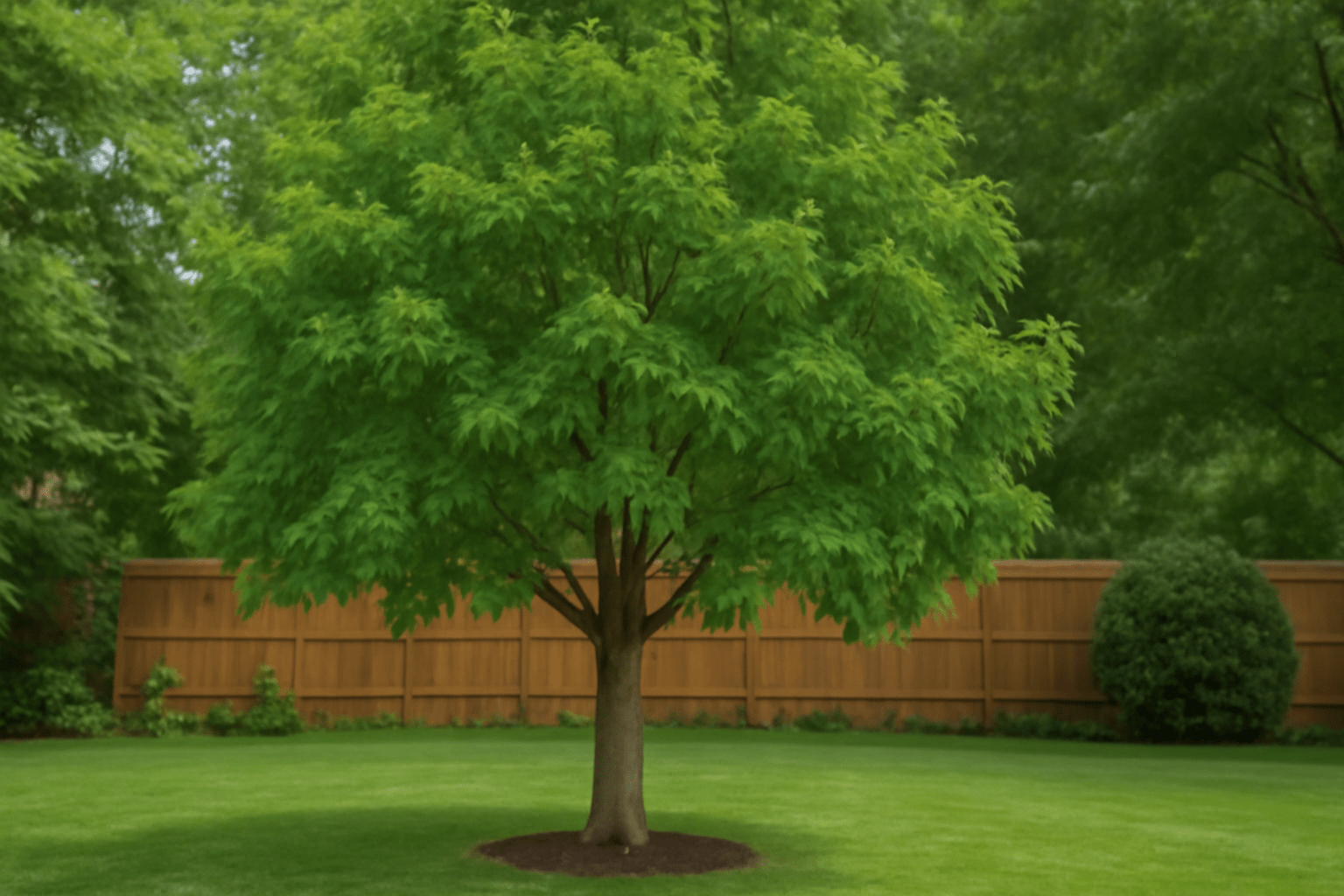
Remember, hickory trees thrive when given the right environment 🏡—plenty of space 🌳, good sunlight 🌞, and well-drained soil 🌱. With a little care ❤️, attention to detail 🔍, and some patience ⏳, your hickory tree will grow strong 💪 and healthy 🌿, becoming a beautiful and resilient part of your yard or garden 🌳.
By following the tips in this guide 📖, you’ll be able to confidently identify 🌳, plant 🌱, and care for hickory trees in Michigan 🌍, ensuring they continue to flourish 🌳 for many years to come 🎉. Happy tree care 🌿, and enjoy the beauty 🌸 and strength 💪 that hickory trees bring to your home 🏡!
Frequently Asked Questions (FAQ)
How can I identify a hickory tree in Michigan?
Hickory trees in Michigan are known for their long, narrow leaves with finely serrated edges and their rough, deeply furrowed bark. You’ll often find them with 5-7 leaflets per leaf. The trees produce round nuts encased in a green husk, which is another key identifying feature. 🌳
When is the best time to plant a hickory tree in Michigan?
The best time to plant a hickory tree in Michigan is in early spring or fall. Planting during these seasons gives the tree time to establish its roots before the hot summer or harsh winter weather sets in. 🌱
What soil is best for planting hickory trees?
Hickory trees prefer well-drained, loamy soil that is rich in organic matter. Avoid areas with heavy clay or poorly drained soil, as these can lead to root rot. Improving soil drainage with compost can help if you have heavier soil. 🌾
How often should I water my hickory tree?
Newly planted hickory trees need deep watering about once a week, especially during dry spells. Once established, they are more drought-tolerant but should still receive deep watering during extreme heat or dry periods. 🌞
How do I prune my hickory tree?
Prune your hickory tree in late winter or early spring before new growth starts. Remove any dead, damaged, or diseased branches and avoid pruning too much. Keep the tree’s natural shape by only trimming small sections at a time. ✂️
What pests should I watch out for with hickory trees?
Common pests that affect hickory trees include hickory bark beetles and aphids. Regularly check the tree for signs of infestations, such as holes in the bark or clusters of aphids on the leaves. Use natural insecticides or neem oil if necessary. 🐞
Are hickory tree nuts edible?
Yes, hickory nuts are edible, but they have a tough shell that’s difficult to crack. Once you break open the shell, the nut is sweet and can be eaten raw or used in baking. Be aware that some hickory species produce more flavorful nuts than others. 🌰
How can I protect my hickory tree from Michigan’s cold winters?
Protect young hickory trees in winter by wrapping their trunks with burlap or tree guards to shield them from freezing winds. Additionally, adding mulch around the base helps to keep the roots insulated. Mature trees are more resilient but still benefit from extra protection during extreme cold. ❄️
